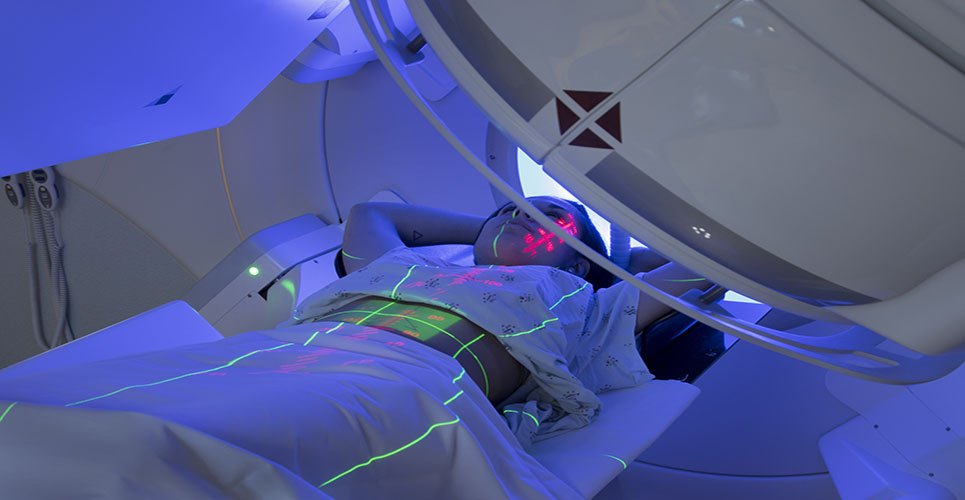teaser
HNC is notoriously difficult to treat, but results of combination therapy trials presented at the recent European Congress of Clinical Oncology in Barcelona have been described as a breakthrough
Jenny Sims
Freelance Healthcare Journalist
Head and neck cancer (HNC) is notoriously hard to treat. Currently the median survival rate for patients with recurrent or metastatic disease is only about six months, but results of combination therapy trials presented at the 14th European Congress of Clinical Oncology in Barcelona recently have been described as a breakthrough.
“For the first time in 25 years we can offer patients a therapy that has proven effective in increasing overall survival without compromising quality of life,” said Professor Jan Vermorken, of University Hospital, Antwerp, Belgium, and lead investigator for the phase III randomised controlled European trial EXTREME (ErbituX in first-line Treatment of Recurrent or MEtastatic head and neck cancer).
The trial has shown that Erbitux® (cetuximab) combined with platinum-based chemotherapy as a first-line treatment is effective in increasing overall survival for patients with recurrent and/or metastatic squamous-cell carcinoma of the head and neck (see Box 1).
[[HPE37_box1_74]]
EXTREME compared more than 400 patients using cetuximab in combination with either cisplatin or carboplatin-based therapy, with patients treated with platinum-based therapy alone. Patients receiving cetuximab had a significantly higher response rate, an almost doubling of time to tumour progression and significantly longer survival. Combined with radiotherapy, cetuximab therapy improved median survival by 20 months and did not lead to increased toxicity.
Professor Vermorken said: “These results provide great hope for patients who for many years have had little to be optimistic about. They are a breakthrough in the treatment of head and neck cancer.”
Background
HNC can occur in the epithelial cells of any tissue or organ in the head and neck region, excluding the eyes, brain, ears, thyroid or oesophagus. Most HNCs occur in the oral cavity (43%) followed by the pharynx (33%) and the larynx (24%), and the rest in the nasopharynx and nasosinus cavities.
It is more common in males than females, and it is estimated that each year in Europe there are around 140,000 new cases and more than 65,000 deaths. Worldwide, HNC is the sixth most common type of cancer.
Risk factors
These include:
- Smoking and alcohol. These are the main causative factors − in Europe up to 90% of oral and pharyngeal cancers are due to tobacco and alcohol consumption, and tobacco smoking produces the highest risk of cancer of the mouth.
- Chewing tobacco or betelnut.
- Long periods of sun exposure.
- Breathing in certain chemicals and wood dusts.
- Poor diet and nutrition.
- Human papillomavirus.
Symptoms include sore throat, difficulties in swallowing, hoarseness, mouth ulcers and swelling in the neck because of an enlarged nymph node.
Treatment aims
Professor Vermorken said that in general, the main treatment goals were disease control, survival, organ preservation and maintaining quality of life. The three most important treatment options were surgery, radiotherapy and chemotherapy. The main challenges were functional and cosmetic organ preservation, breathing, eating and speaking, and the psychological impact of disfigurement following surgery. The earlier patients present, the better their chances of survival.
Professor Vermorken added: “Unfortunately, the majority of patients − 60–90% − still present with locally advanced or locoregionally advanced disease. Those who have unresectable disease do very poorly − the majority of these patients do not survive five years and the majority will die within 18 months. The category with the worst prognosis are patients with recurrent and/or metastatic disease, treated with chemotherapy for palliation. The survival of these patients is 6−9 months.”
Raising awareness
European HNC specialists have been calling for greater awareness of the disease among primary care physicians and patients, and for a multidisciplinary approach. They have warned that late diagnosis and poor understanding of the risks of HNC have led to preventable deaths of patients throughout Europe.
In the UK, these fears were substantiated by a report on cancers of the larynx and oral cavity, commissioned by health watchdog the Healthcare Commission, which revealed that a significant number of patients experienced delays in diagnostic imaging and radiotherapy services.
Professor Jacques Bernier, head of radio-oncology at the Oncology Institute of Southern Switzerland, Bellinzona, and chair of the European InterGroup for Head and Neck Cancer Radiotherapy, explained: “Head and neck cancer is a very big problem worldwide − 300,000 people die from it each year, which accounts for 5% of all malignancies.
“The main challenge is that we have to improve the locoregional control of the primary tumour. There is only 20–30% survival at five years. Compliance and toxicity are major problems. We have to improve the outcomes and to do it without increasing too much the toxicity of the treatments.”
Professor Gordon McVie, senior consultant in research for the European Institute of Oncology in Milan, Italy, said: “The awareness of cancer is an issue that will only get larger in the public eye as exciting developments are made.” ■

